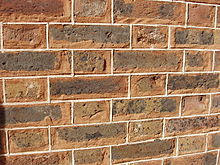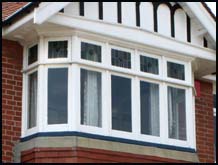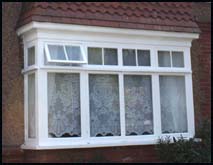Villa Eulalia, Arts and Crafts Federation style at Vaucluse NSW
[Previous post: Federation Leadlight Windows - Next post: ]
- See also Kianga Vaucluse Federation House
Villa Eulalia, 1 Gilliver Avenue, Vaucluse, NSW

Auction: Wednesday, 28 Nov 06:30 PM Contact D'Leanne Lewis Laing & Simmons 0419 676 667
Price guide: above $6 million - Source[1]

"Cleverly combined ornate period details with the best in chic contemporary design"
“Villa Eulalia” is a uniquely sophisticated & sleek modern family home, just made for entertaining with an ideal all year round indoor & outdoor lifestyle.

"With all living rooms opening to balconies, verandahs, enormous level lawn, sunny pool & magnificent private gardens by William Dangar, the home's iconic views & prestigious location ensure a prized family lifestyle.


| Virtual Tour: | Slideshow: |
 |

The home, on 1230 sq. meters, was once owned by FitzWilliam Wentworth, son of William Charles Wentworth, a leading figure in colonial NSW. FitzWilliam sold the property in 1906 for 112 pounds. It has had two owners since 1912, and was in original condition when the present owners bought it in 2001.

Architect John Normyle then designed an extension and restoration to blend the ornate period features with chic modern appeal. The gardens are by landscape designer William Dangar. - Source[2]

+ Only 2 owners since 1912.
+ Approximately 1,230sqm of sundrenched level land

+ Flexible floorplan offers 4-5 bedroom suites, 4 ½ bathrooms

+ Large formal living & separate formal dining rooms with feature open fireplaces

+ Separate informal family sitting/tv room

+ Designer open plan CaesarStone kitchen (breakfast bar tons of storage)

+ Stunning informal family living area with floor to ceiling bi-fold doors opening to wrap-around decking & outdoor entertaining
+ Sundrenched front & rear gardens with alfresco verandahs + feature glass mosaic pool.

+ Garaging for 3 cars, wine cellar, visitor parking & full security

+ Sleek fusion of stone, glass, steel, timber floors, high ceilings, greenery & sunlight

- ^ http://www.lsdb.com.au/pol/property/search.asp?f_propertyID=1943351&xsl=448&f_st=1&f_ct=1&f_ps=2
- ^ Wentworth Courier, November 7 2012, page 56, House of the week by Justine Oates.



































